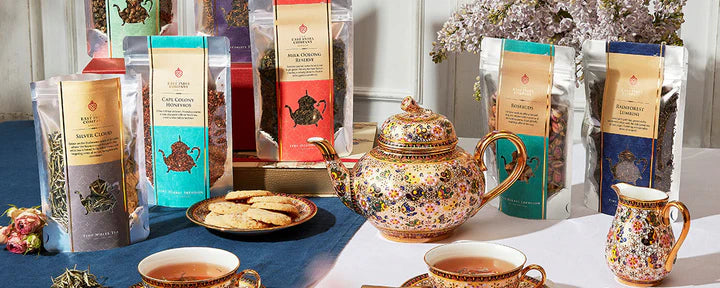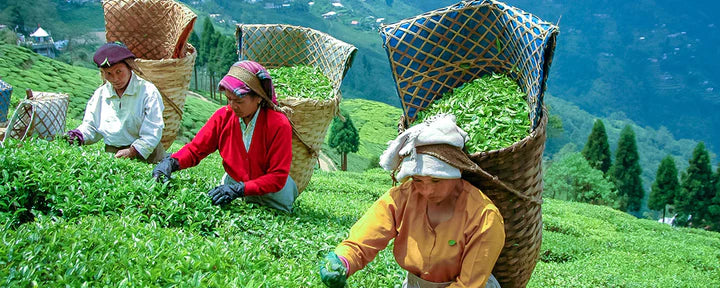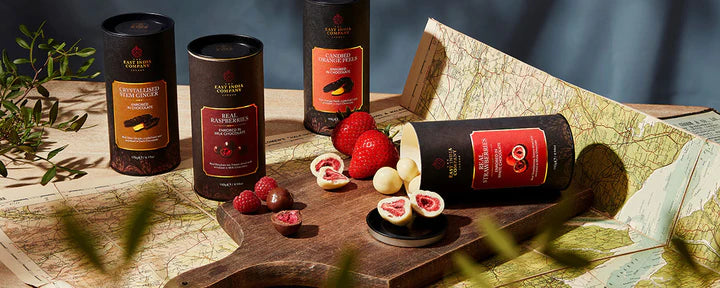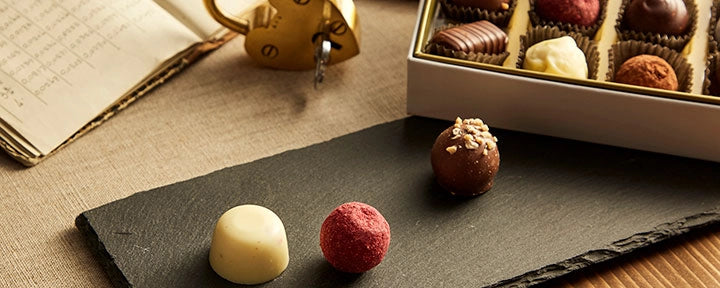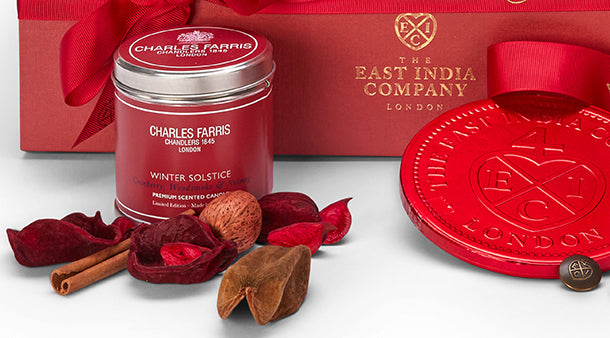EXPLORE
THE TIMELINE
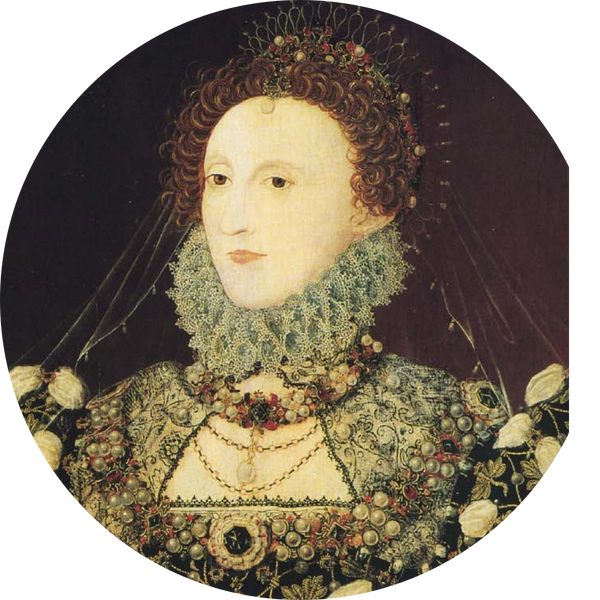
1550
Spanish & Portuguese dominance
England’s navy sits in the shadows of the maritime giants Portugal and Spain.
During the second half of the 16th century, England’s navy is trying to emerge as a force in its own right, and out of the shadows of Portugal and Spain whose maritime might had been largely unchallenged.
Confrontation with Catholic Portugal and Spain is almost inevitable given that Queen Elisabeth I was Protestant.
But the disputes are also about commerce, with Spain attempting to retain monopoly on territorial expansion in the New World, while Portugal tries to secure sole possession of trade routes to the East and to its valuable spices.
1588
Defeat of the Spanish Armada
England's navy grows stronger, challenge is inevitable.
England’s navy grows stronger and challenge to Portugal and Spain on the high seas is becoming inevitable.
England offers support to Dutch Protestant rebels in The Netherlands, a Spanish colony, which gives both countries the pretext to go to war.
The defeat of the Spanish Armada, under Francis Drake in 1588, signals England's rise as a European naval power.
1592
The capture of the Madre de Deus
Queen Elizabeth I is funding and benefitting from 'privateers' acts of piracy.
Queen Elizabeth I is funding and benefitting from 'privateers' acts of piracy, Sir Walter Raleigh being her favourite, until he is locked up in the Tower...
British public interest in the lucrative trade with Asia grows to a frenzy with the Raleigh-inspired capture of the Madre de Deus, a Portuguese ship that had been to the Indies, unveiling on arrival into Dartmouth a vast treasure of precious metals, stones and spices and textiles.
For the first time, there was tangible proof of the wealth of Asia just waiting to be brought back home. It was the final catalyst for petition for a Royal Charter.
1600
Queen Elizabeth I
Grants a Royal Charter and establishes The East India Company.
Queen Elizabeth I, grants a charter to ‘The Governor and Company of Merchants of London Trading into the East Indies’, commonly known as The East India Company, bestowing her royal patronage and empowering them with a trading monopoly in spices, tea, coffee and all other luxury goods from the east, essentially everywhere past the Cape of Good Hope.
She also grants The Company the right to bear a Coat of Arms.
The Charter will be renewed by James 1 in 1609.
1601
First Voyage
The East India Company’s ship ‘Red Dragon’ sent to the Spice Islands and returns with pepper.
With the funding of £68,373 from 250 subscribers of the world's first common stock company, Captain James Lancaster sets sail from London in the flagship Red Dragon.
Carrying bullion and goods to trade - and with great foresight - lemon juice, which means scurvy is avoided on the ship, unlike on the accompanying vessels Hector, Susan and Ascension, to their cost with the loss of 100 men.
The fleet arrives in Sumatra in 1602.
1602
To the Spice Islands
The Red Dragon and Hector sail on to Bantam, on the island of Java in modern-day Indonesia, to procure spices in exchange for silver.
The Red Dragon and Hector sail on to Bantam, on the island of Java in modern-day Indonesia, to procure spices in exchange for silver.
Company traders are able to negotiate temporary settlements or "factories" in the island, while pepper-laden ships returned to Britain and their profits will secure the company’s immediate future.
The English traders quickly realize however that the Indian 'piece trade' in cottons and printed textiles are much in demand across Southeast Asia, and that they stood to obtain far more spices in exchange for Indian textiles than from silver.
1607
The Hector sails 10,000 miles to India
The Hector is the first English ship to sail directly to India.
It is from Deptford on the River Thames that the “Hector”, a large merchant vessel of its time, carrying 110 men and 24 guns, is dispatched by The East India Company in April 1607.
It's the first English ship to be sailing directly to India.
A large crowd has gathered to wish Captain William Hawkins and the crew farewell - not surprising considering the number of prominent citizens, including London’s Lord-Mayor, who are invested in this risky venture.
The aim is to reach Surat, on the northwest coast of modern-day India. A journey of more than ten thousand miles.
1608
The English reach India
The Hector proceeds to Agra, carrying a letter of introduction from King James I.
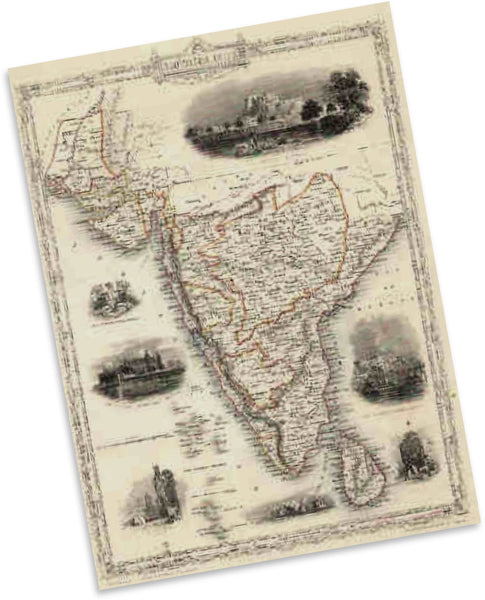
The Hector reaches Surat in 1608 under William Hawkins. Surat was a Mughal-controlled port city in southern Gujarat, on the maritime trading circuit with the Persian Gulf.
But the British are but one amongst many other Europeans seeking to find favour with the Mughals, with the Dutch and particularly the Portuguese dominant.
The Hector proceeds to Agra, carrying a letter of introduction from King James I, with a blank space for the name of the Mughal Emperor!
It transpired that the Emperor Jehangir spoke Turkish and liked a drink, just like Hawkins, and they got on famously.
1612
The Company defeats the Portuguese in Battle of Swally
Victory over the Portuguese marks the beginning of the ascent of The Company's presence in India
A small naval battle but with historic impact.
Also known as the Battle of Suvali, a naval battle commences off the coast of Suvali near the Surat and the victory for the East India Company galleons led by Captain Best and the famous Red Dragon, over four Portuguese galleons, marks the beginning of the ascent of the East India Company's presence in India.
The battle convinces The East India Company to establish a small navy to safeguard their commercial interests from other European powers and also from pirates.
This small beginning is regarded as the root of the modern Indian Navy.
1613
Trade with Japan
The East India Company’s ship ‘Clove’ is the first to reach Japan, signing the first trade agreement.
Looking north for opportunities to trade in woollens, John Saris is an East India Company officer in Bantam who sees Japan as a commercial opportunity. A view endorsed by the famous William Adams, the English pilot working privately for the Dutch, who settled in Japan from 1600.
The East India Company commissions Saris to proceed from Bantam to Japan on ‘The Clove’, the first English ship to reach Japan.
He signs the first trade agreement between the two countries, with mutual gifts including the first telescope to leave Europe for Tokugawa Shogun and a full Samurai armour for King James I.
1615
First use of a word for 'Tea' in English
A request from London for a 'pot of the best sort of chaw in Meaco'.
Ultimately, trade in woollen broadcloth with Japan is not to be successful and Saris returns to London with less than acclaim from The Company Directors.
William Adams and a Mr Cocks are left in charge but to no avail and The Company pulls out in 1623.
Before that - a significant event - in 1615 a word for 'tea' is first recorded in English, with a request from London to a Mr Eaton in Hirado, requesting a 'pot of the best sort of chaw in Meaco', where tea was grown for the Shogun.
Thus tea drinking is established 50 years before Catherine of Braganza brings tea to the British Court.
1615
A Trade Agreement with India
Sir Thomas Roe is sent on a mission to conclude the trade treaty with Emperor Jehangir in India.
Sir Thomas Roe is sent on a mission to conclude the trade treaty with Emperor Jehangir in India.
Jehangir is impressed by Roe, with his aristocratic demeanour and enjoys the presents he receives, in particular a coach and coachman!
Roe returns with trade and concession rights, if not the monopoly desired.
Of note is Roe's advice that "War and Trafique are incomptable" - wise counsel that was largely ignored over the next 250 years.
1619
Coffee from Mocha
It was in Arabia, in the Sufi monasteries of Yemen, that coffee beans were first roasted and brewed in a similar way to today.
It's believed to be the Ethiopeans who first knew the energizing effect of the coffee plant and it was in Arabia, in the Sufi monasteries of Yemen, that coffee beans were first roasted and brewed in a similar way to today.
By the 15th Century, it had reached the rest of the Middle East, Persia, Turkey and North Africa. The East India Company saw coffee as a great opportunity, available at the time only from the Turkish-controlled port of Mocha, in Yemen.
Thanks to Thomas Roe once again, it was the first western company to be engaged in the coffee trade into India and Persia.
1623
The English exit the Spice Islands
The powerful Dutch East India Company protects its near-monopoly spice trade.
The powerful Dutch East India Company protects its near-monopoly spice trade by trying to stop the English from trading directly with the Spice Islands of the Bandas and Moluccas, in nutmeg, mace and cloves.
The English with their factories on Amboyna, are ruthlessly tortured and evicted in 1623 by the Dutch in the Amboyna Massacre.
40 years later the last British holding of the tiny 'nutmeg' island Pulo Run is traded with the Dutch in exchange for an 'insigificant' island on the east coast of America - New Amsterdam, now New York...
1639
The City of Madras is born
The first British community grows in India and becomes Madras, the start of British dominance in India.
The British settle in Sao Tome on the SE coast of India, and whilst challenging to land due to the heavy surf, it's a strategic location for trading further east.
Fort St. George is built, the first major British community in India, with barracks, a church, a prison... The population grows, Indians weavers arrive in search of work and live around the fort, in what becomes known as the ‘Black City’, which will become Madras.
It's from here that the Company becomes a local power, defeating the French at a critical time when they could well have become the dominant power in India. Instead, it would be the British.
1648
East India Company House
For nearly 50 years, The East India Company lodges around London, but the time arrives when something more grand is appropriate.
For nearly 50 years, The East India Company lodges around London, but the time arrives when something more grand is appropriate.
Craven House is acquired on Leadenhall Street, a partly wooden Elizabethan mansion, and soon becomes East India House, decorated with paintings of the Company's ships.
A new location is found 80 years later, but the original site is forever fanous as the future home of Lloyds of London.
Some of the original artworks and furniture can still be seen in the British Museum.
1664
Tea for the King of England
The East India Company first introduces tea to Britain as a gift.
King Charles II expected gifts of exotic animals or birds every time a ship of The East India Company returned from the East.
On one such arrival in 1664, the exotic animal cupboard was sadly empty. When the Captain informed the Company’s board of this sorry situation, they instructed that the ship be scoured for a suitable gift. Two pounds of tea were found on board and duly came to the rescue of the Company and was gifted to the King.
A few weeks later, the Company ordered 100 pounds of the “best tee procurable” from its Bantam factory, the implication being that the tea had been well received.
1667
Weavers attach East India House
The import of Indian cloths threathens the English industry.
Weavers, dyers and linen drapers in England protest that imports of Indian cloth are threatening their own industries.
They riot and attack East India House in London. Initially, The Company responds by re-exporting Asian textiles to other countries in Europe.
But market forces soon overshadow the cries of the protesters, and Asian textiles continue to be hugely popular in England throughout the 18th century.
1668
Catherine of Braganza
Bringing the port of Bombay and a love of tea to England.
King Charles II marries Catherine of Braganza, Portugal, and as part of her dowry the English crown receives the island of Bombay, thus providing it with a magnificent natural harbour and offering its ships much need protection from local pirates and the vessels of other hostile European trading companies.
This leads to a gradual English shift of focus away from Surat, and 6 years later, Bombay will became their headquarters.
Catherine herself has an important place in tea history. Famously an 'early adopter', she firmly establishes the taking of tea within the Royal Court.
1690
Calcutta is founded
First a factory, then a fort, to a town - the birth of Kolkata.
Calcutta is founded on the site of three villages Sutanati, Gobindapur and Kalikata. The English had received the right to trade in Bengal as early as the 1650s, however it took nearly 50 years to receive the approval from the Mughal governor of Bengal to fortify their settlement on the treacherous tidal River Hoogli.
The construction of Fort William will not be completed until 1702, and grows to becomes a sizable town over the following decade.
Houses and public buildings in the centre of Calcutta closely resemble a provincial English city like Manchester or Bristol.
1699
Trade with China
The Company begins to trade with Canton, importing silk, tea and porcelain from China.
The Company is trading with Canton, importing silk, tea and porcelain from China.
In England, the demand for tea booms, and by the late 1700s tea now accounts for more than 60 per cent of the Company's total trade.
Having initially traded tea for silver, the English are concerned that too much precious silver is leaving their shores.
They begin to illegally trade with China the highly addictive drug opium produced in India, exacerbating the widespread drug problem in China. Millions of Chinese will die from the drug, which will also bring the two countries to war.
1550
Spanish & Portuguese dominance
During the second half of the 16th century, England’s navy is trying to emerge as a force in its own right, and out of the shadows of Portugal and Spain whose maritime might had been largely unchallenged.
Confrontation with Catholic Portugal and Spain is almost inevitable given that Queen Elisabeth I was Protestant.
But the disputes are also about commerce, with Spain attempting to retain monopoly on territorial expansion in the New World, while Portugal tries to secure sole possession of trade routes to the East and to its valuable spices.
1588
Defeat of the Spanish Armada
England’s navy grows stronger and challenge to Portugal and Spain on the high seas is becoming inevitable.
England offers support to Dutch Protestant rebels in The Netherlands, a Spanish colony, which gives both countries the pretext to go to war.
The defeat of the Spanish Armada, under Francis Drake in 1588, signals England's rise as a European naval power.
1592
The capture of the Madre de Deus
Queen Elizabeth I is funding and benefitting from 'privateers' acts of piracy, Sir Walter Raleigh being her favourite, until he is locked up in the Tower...
British public interest in the lucrative trade with Asia grows to a frenzy with the Raleigh-inspired capture of the Madre de Deus, a Portuguese ship that had been to the Indies, unveiling on arrival into Dartmouth a vast treasure of precious metals, stones and spices and textiles.
For the first time, there was tangible proof of the wealth of Asia just waiting to be brought back home. It was the final catalyst for petition for a Royal Charter.
1600
Queen Elizabeth I
Queen Elizabeth I, grants a charter to ‘The Governor and Company of Merchants of London Trading into the East Indies’, commonly known as The East India Company, bestowing her royal patronage and empowering them with a trading monopoly in spices, tea, coffee and all other luxury goods from the east, essentially everywhere past the Cape of Good Hope.
She also grants The Company the right to bear a Coat of Arms.
The Charter will be renewed by James 1 in 1609.
1601
First Voyage
With the funding of £68,373 from 250 subscribers of the world's first common stock company, Captain James Lancaster sets sail from London in the flagship Red Dragon.
Carrying bullion and goods to trade - and with great foresight - lemon juice, which means scurvy is avoided on the ship, unlike on the accompanying vessels Hector, Susan and Ascension, to their cost with the loss of 100 men.
The fleet arrives in Sumatra in 1602.
1602
To the Spice Islands
The Red Dragon and Hector sail on to Bantam, on the island of Java in modern-day Indonesia, to procure spices in exchange for silver.
Company traders are able to negotiate temporary settlements or "factories" in the island, while pepper-laden ships returned to Britain and their profits will secure the company’s immediate future.
The English traders quickly realize however that the Indian 'piece trade' in cottons and printed textiles are much in demand across Southeast Asia, and that they stood to obtain far more spices in exchange for Indian textiles than from silver.
1607
The Hector sails 10,000 miles to India
It is from Deptford on the River Thames that the “Hector”, a large merchant vessel of its time, carrying 110 men and 24 guns, is dispatched by The East India Company in April 1607.
It's the first English ship to be sailing directly to India.
A large crowd has gathered to wish Captain William Hawkins and the crew farewell - not surprising considering the number of prominent citizens, including London’s Lord-Mayor, who are invested in this risky venture.
The aim is to reach Surat, on the northwest coast of modern-day India. A journey of more than ten thousand miles.
1608
The English reach India
The Hector reaches Surat in 1608 under William Hawkins. Surat was a Mughal-controlled port city in southern Gujarat, on the maritime trading circuit with the Persian Gulf.
But the British are but one amongst many other Europeans seeking to find favour with the Mughals, with the Dutch and particularly the Portuguese dominant.
The Hector proceeds to Agra, carrying a letter of introduction from King James I, with a blank space for the name of the Mughal Emperor!
It transpired that the Emperor Jehangir spoke Turkish and liked a drink, just like Hawkins, and they got on famously.

1612
The Company defeats the Portuguese in Battle of Swally
A small naval battle but with historic impact.
Also known as the Battle of Suvali, a naval battle commences off the coast of Suvali near the Surat and the victory for the East India Company galleons led by Captain Best and the famous Red Dragon, over four Portuguese galleons, marks the beginning of the ascent of the East India Company's presence in India.
The battle convinces The East India Company to establish a small navy to safeguard their commercial interests from other European powers and also from pirates.
This small beginning is regarded as the root of the modern Indian Navy.
1613
Trade with Japan
Looking north for opportunities to trade in woollens, John Saris is an East India Company officer in Bantam who sees Japan as a commercial opportunity. A view endorsed by the famous William Adams, the English pilot working privately for the Dutch, who settled in Japan from 1600.
The East India Company commissions Saris to proceed from Bantam to Japan on ‘The Clove’, the first English ship to reach Japan.
He signs the first trade agreement between the two countries, with mutual gifts including the first telescope to leave Europe for Tokugawa Shogun and a full Samurai armour for King James I.
1615
First use of a word for 'Tea' in English
Ultimately, trade in woollen broadcloth with Japan is not to be successful and Saris returns to London with less than acclaim from The Company Directors.
William Adams and a Mr Cocks are left in charge but to no avail and The Company pulls out in 1623.
Before that - a significant event - in 1615 a word for 'tea' is first recorded in English, with a request from London to a Mr Eaton in Hirado, requesting a 'pot of the best sort of chaw in Meaco', where tea was grown for the Shogun.
Thus tea drinking is established 50 years before Catherine of Braganza brings tea to the British Court.
1615
A Trade Agreement with India
Sir Thomas Roe is sent on a mission to conclude the trade treaty with Emperor Jehangir in India.
Jehangir is impressed by Roe, with his aristocratic demeanour and enjoys the presents he receives, in particular a coach and coachman!
Roe returns with trade and concession rights, if not the monopoly desired.
Of note is Roe's advice that "War and Trafique are incomptable" - wise counsel that was largely ignored over the next 250 years.
1619
Coffee from Mocha
It's believed to be the Ethiopeans who first knew the energizing effect of the coffee plant and it was in Arabia, in the Sufi monasteries of Yemen, that coffee beans were first roasted and brewed in a similar way to today.
By the 15th Century, it had reached the rest of the Middle East, Persia, Turkey and North Africa. The East India Company saw coffee as a great opportunity, available at the time only from the Turkish-controlled port of Mocha, in Yemen.
Thanks to Thomas Roe once again, it was the first western company to be engaged in the coffee trade into India and Persia.
1623
The English exit the Spice Islands
The powerful Dutch East India Company protects its near-monopoly spice trade by trying to stop the English from trading directly with the Spice Islands of the Bandas and Moluccas, in nutmeg, mace and cloves.
The English with their factories on Amboyna, are ruthlessly tortured and evicted in 1623 by the Dutch in the Amboyna Massacre.
40 years later the last British holding of the tiny 'nutmeg' island Pulo Run is traded with the Dutch in exchange for an 'insigificant' island on the east coast of America - New Amsterdam, now New York...
1639
The City of Madras is born
The British settle in Sao Tome on the SE coast of India, and whilst challenging to land due to the heavy surf, it's a strategic location for trading further east.
Fort St. George is built, the first major British community in India, with barracks, a church, a prison... The population grows, Indians weavers arrive in search of work and live around the fort, in what becomes known as the ‘Black City’, which will become Madras.
It's from here that the Company becomes a local power, defeating the French at a critical time when they could well have become the dominant power in India. Instead, it would be the British.
1648
East India Company House
For nearly 50 years, The East India Company lodges around London, but the time arrives when something more grand is appropriate.
Craven House is acquired on Leadenhall Street, a partly wooden Elizabethan mansion, and soon becomes East India House, decorated with paintings of the Company's ships.
A new location is found 80 years later, but the original site is forever fanous as the future home of Lloyds of London.
Some of the original artworks and furniture can still be seen in the British Museum.
1664
Tea for the King of England
King Charles II expected gifts of exotic animals or birds every time a ship of The East India Company returned from the East.
On one such arrival in 1664, the exotic animal cupboard was sadly empty. When the Captain informed the Company’s board of this sorry situation, they instructed that the ship be scoured for a suitable gift. Two pounds of tea were found on board and duly came to the rescue of the Company and was gifted to the King.
A few weeks later, the Company ordered 100 pounds of the “best tee procurable” from its Bantam factory, the implication being that the tea had been well received.
1667
Weavers attach East India House
Weavers, dyers and linen drapers in England protest that imports of Indian cloth are threatening their own industries.
They riot and attack East India House in London. Initially, The Company responds by re-exporting Asian textiles to other countries in Europe.
But market forces soon overshadow the cries of the protesters, and Asian textiles continue to be hugely popular in England throughout the 18th century.
1668
Catherine of Braganza
King Charles II marries Catherine of Braganza, Portugal, and as part of her dowry the English crown receives the island of Bombay, thus providing it with a magnificent natural harbour and offering its ships much need protection from local pirates and the vessels of other hostile European trading companies.
This leads to a gradual English shift of focus away from Surat, and 6 years later, Bombay will became their headquarters.
Catherine herself has an important place in tea history. Famously an 'early adopter', she firmly establishes the taking of tea within the Royal Court.
1690
Calcutta is founded
Calcutta is founded on the site of three villages Sutanati, Gobindapur and Kalikata. The English had received the right to trade in Bengal as early as the 1650s, however it took nearly 50 years to receive the approval from the Mughal governor of Bengal to fortify their settlement on the treacherous tidal River Hoogli.
The construction of Fort William will not be completed until 1702, and grows to becomes a sizable town over the following decade.
Houses and public buildings in the centre of Calcutta closely resemble a provincial English city like Manchester or Bristol.
1699
Trade with China
The Company is trading with Canton, importing silk, tea and porcelain from China.
In England, the demand for tea booms, and by the late 1700s tea now accounts for more than 60 per cent of the Company's total trade.
Having initially traded tea for silver, the English are concerned that too much precious silver is leaving their shores.
They begin to illegally trade with China the highly addictive drug opium produced in India, exacerbating the widespread drug problem in China. Millions of Chinese will die from the drug, which will also bring the two countries to war.
EXPLORE
THE TIMELINE

1757
Clive of India wins Battle of Plessey
The British exert their control in Bengal with Indians suffering hash consequences.
The strength of the wealthy Mughal Empire weakens, and wars break out between different districts of India.
Robert Clive, a Company Officer, recaptures Calcutta from Siraj-ud-Daulah, Nawab of Bengal at the Battle of Plassey.
As a consequence, The Company becomes responsible for the whole of Bengal, India's richest province.
Once in control, land taxes are tripled and many Indians are left living in terrible poverty. Millions die in famine, and over the next 2 decades, millions more are dispossessed of their land.
1773
The Tea Act
The Tea Act is intended to establish the Company’s monopoly of the tea trade in the British Empire.
The East India Company is in trouble, in debt and sat on huge stocks of tea. Parliament bails out The Company with the Tea Act of 1773, lowering the duty paid on its tea and giving monopoly on the direct shipping from China to America.
Tea can now only enter the colonies legally from England, but with this new competitive advantage the Company can dominate the American market, tea now being very popular on the East coast. Furthermore, whilst duty is removed in Britain, it's still levied on the colonists for the import of the tea.
Protest in the US is loud and the Boston Tea Party will soon be the result.
1774
The Boston Tea Party
342 chests of The East India Company’s tea was thrown into the Boston Harbour.
The infamous Boston Tea party was driven by resistance throughout British America against the Tea Act, passed by the British Parliament in 1773.
Colonists objected because it violated their right to be taxed only by their own elected representatives.
Men thinly disguised as Mohawk Indians dumped 342 chests overboard three ships, the ‘Dartmouth’, the ‘Eleanor’ and the ‘Beaver’, loaded with tea from The East India Company.
One of the original tea crates with The East India Company Merchant Mark still exists, and is on display in the Boston Tea Party Ships & Museum.
1773
First Governor General of India
The British Government curbs the power of The East India Company.
Under Parliament's Regulating Act, which curbs the powers of the East India Company in India, Warren Hastings becomes the first British Governor-General in India.
He is credited with creating a new adminstrative structure, consolidating governance in Calcutta.
His legacy includes unifying currency, introducing a postal system and eradicating famine through the creation of public granaries.
With a deep passion for India, he ultimately returned to London charged with mismanagement in 1785. He'll be bankrupted defending himself until being acquitted in the Lords 10 years later.
1784
William Pitt's India Act
The Act reduces political powers of The East India Company, commercial and trading powers remain.
The Company has grown into a powerful political and trading organisation, rivaling that of the British Government itself, in effect ruling many of The British Empires territories.
The India Act now differentiates The East India Company’s political functions from its commercial activities.
In political matters The Company is now subordinated to a Board of Control, directly answerable to Parliament.
But the process is slow and will require subsequent parliamentary acts for the British Government to fully separate The Company’s political control from its commercial activities.
1790
Earl Grey Invented
Prime Minister Charles Grey popularised the beverage, but botanist Sir George Staunton is the man to thank.
Although British Prime Minister Charles Grey popularised this famous tea, it was Sir George Staunton, a botanist with The East India Company that we really have to thank.
Using orange flowers to flavour tea was first observed in China by Sir George, who sent drawings and a description of this process back to England in the 1790s to his friend Sir Joseph Banks, George III’s adviser at the Royal Botanic Gardens at Kew.
Joseph Banks used Bergamot oil as a substitute for the Neroli oil used in China but not available in Europe. Earl Grey tea was born.
1802
Great Trigonometrical Survey
Accurately mapping India and for the first time calculating the height of Everest.
The 'Great Trigonometrical Survey' is commissioned to survey the entire Indian subcontinent, with scientific precision in response to costly inaccuracies found during military activity.
Beginning in 1802 by the British infantry officer William Lambton and sponsored by The East India Company, it's later led by George Everest and others over the 70 years of the project, rather than its expected 5.
Using all the science of the day, the result is an accurate mapping and demarkation of India, and for the first time, the measurement of the heights of K2 and Everest.
1808
Birth of the Paisley pattern
Imports of distinctively patterned shawls from Kashmir, later manufactured in the Scottish town of Paisley.
Imports via the ‘silk routes’ brought a brand new textile pattern to Europe from the 18th century and with the arrival of luxurious Kashmir shawls, the pattern took the continent by storm.
These shawls were soon imitated throughout Europe, notably in Wales and in the town of Paisley in Renfrewshire, Scotland from 1808.
From that point onwards the English term for the motif was ‘Paisley’, although it became known among quilt-makers in Amercia as ‘Persian Pickles’ and in the Welsh textile industry as ‘Welsh Pears'. At its peak from c.1850 -1860 the town of Paisley employed 6,000 weavers.
1813
Loss of trading monopoly in India
Parliament revokes the trading privileges that have been the basis for the success of The East India Company.
In the Charter Act, the British Crown took over sovereignty over the Indian territories held by The Company.
Whilst renewing the Royal Charter for a further 20 years, Parliament however revoked all trading monopoly privileges except those in tea, held by The Company, the basis for the success of the preceding century.
The loss paved the way for other British companies to trade in the east.
The East india Company did however continue to retain monopoly on trade with China for a further 25 years.
1819
Birth of Singapore
East India officer, Sir Stanford Raffles, buys the lease and establishes Singapore.
Stamford Raffles, officer of The East India Company, signs The Singapore Treaty with Sultan Hussein and the Temenggong, the name given to an official responsible for the safety of the Sultan, and who also oversees the army.
East India officer William Farquhar is appointed Resident and Commandant under the authority of Raffles, and is responsible for establishing the trading settlement.
The Union Jack is hoisted, recognising the official founding of Singapore.
1833
Tea monopoly lost in China
Starts looking towards India for alternative tea growing areas.
The Charter Act extends The Company's Charter by a further 20 years, but removes its monopoly over the China tea trade, the loss of which will be the catalyst to look to its Indian territories for potential tea growing areas - with an enormous positive legacy.
But in truth, the Act is a stay of execution, as popular opinion seeks The Company's abolition. Administrative and political duties in India now replace commercial.
Anti-slavery and equality provisions are positive elements, however the handing over of The Company debt to be serviced by the Indian Government, drains the wealth from the country.
1841
Tea Established in Darjeeling
Robert Fortune smuggles tea out of China and brings it to India.
Robert Fortune, a botanist, was hired to obtain the finest tea plants surrepticiously from China to establish plantations in India.
He disguised himself as a Chinese man ‘from a distant province’, hired an interpreter.
His efforts resulted in the shipment of 20,000 plants to the Himalayas, establishing Darjeeling as one of the finest tea producing regions in the world, and India as one of the dominant world tea producers today.
1842
First Opium War ends with ceding of Hong Kong
100 years of The Company exploiting the opium addiction in China leads to war and to Hong Kong.
The Company had long exploited its access to Indian opium to sell illegally to China, where addiction was rife.
This lucrative, immoral business traded in the silver required to buy the more valuable commodity of tea to take back to Europe.
Eventually a minor skirmish between the British and Chinese in Kowloon Bay saw the start of The First Opium War in 1839, escalating the following year with the British sending a naval force to impose reparations for financial losses.
The Chinese Empire was defeated and the Treaty of Nanking ceded the island of Hong Kong to the British in reparation.
1850
Koh-i-Noor Diamond
Presented to Queen Victoria and exhibited for the first time.
It's June 3rd 1850. Lord Dalhousie, on behalf of The East India Company, presents to Queen Victoria the famous Koh-i-Noor diamond, thus securing to the British crown a jewel the possession of which many an Eastern monarch would gladly have risked life and kingdom.
The Koh-i-Noor Diamond is exhibited for the first time and the profits from the event would later fund the development of the Victoria & Albert museum in London.
1851
The Great Exhibition
The treasures of India brought to London - jewels, textiles, furniture, art and wild animals.
At the height of its power, The Company took part in the Great Exhibition, the first world’s fair, in the Crystal Palace of London’s Hyde Park.
Over 6 million people visited treasures of jewels, textiles, furniture, art, wild animals - giraffes, elephants, and tigers - brought by The East India Company to its 'Indian Court' and led to the expression of India being the 'Jewel In the Crown' of the British Empire.
1860
Second Opium War
A continuation of conflict post the first Opium War leads again to war.
The 2nd war is the result of the failure of the Treaty of Nanking after the First Opium War to satisfy the British desire for improved trade and relations, together with various acts of aggression against foreigners.
This 4-year conflict, making allies of Britain, France, USA and Russia, finally leads to the looting and destruction of the Imperial Summer Palace in Beijing.
The resulting Chinese defeat in 1860 leads to the Convention of Beijing, which includes the opening up of Tianjin as a trading port, ceding of Kowloon to the British, freedom of religion in China and the legalisation of the opium trade.
1857
First War of Indian Independance
Resentment and tension erupted in a revolt by the Bengal army, spreading to Delhi.
As Britain’s industrial economy grew at India's expense, social relations between the British and Indians changed.
Indians became seen as 'subjects', interaction being defined by a framework of cultural and economic subordination. Indians were depicted either as workers in British service, or as an exotic race with unusual practices.
High taxes, discrimination and aloofness all contributed to resentment and ultimately to violent revolt by the Bengal army in 1858, the violence threatening TEIC's presence in India.
Lack of Indian co-ordination meant the 'mutiny' failed and Company troops regained command.
1858
The Government of India Act
The powers of The East India Company are passed to the Crown, following the 'Indian mutiny'.
It's the Sepoy Mytiny, better known as the First War of Indian Independence of 1857, that finally tips the balance and leads Parliament to pass "The Government of India Act" the following year.
The Act calls for the liquidation of the British East India Company, as well as the transfer of all of its activities to the British Crown, noting the grave concerns about the current governance of India, indeed the Bill was initially titled "An Act for the Better Governance of India".
Led intially by Prime Minister Lord Palmerston, it was eventually passed in August.
1874
East India Stock Redemption Act
The Company is dissolved and Queen Victoria becomes Empress of India.
Even before this final nail-in-the-coffin for The Company, it has been effectively dissolved already, as The Crown has taken all its responsibilities held under 'The Act for the Better Government of India'.
The 24,000 strong military force is absorbed into the British Army, removing any remaining military power. Queen Victoria is the ruling monarch and with her new authority over India, becomes the Empress of India.
The Times epitaph: “It accomplished a work such as in the whole history of the human race no other company ever attempted and as such is likely to attempt in the years to come”
1757
Clive of India wins Battle of Plessey
The strength of the wealthy Mughal Empire weakens, and wars break out between different districts of India.
Robert Clive, a Company Officer, recaptures Calcutta from Siraj-ud-Daulah, Nawab of Bengal at the Battle of Plassey.
As a consequence, The Company becomes responsible for the whole of Bengal, India's richest province.
Once in control, land taxes are tripled and many Indians are left living in terrible poverty. Millions die in famine, and over the next 2 decades, millions more are dispossessed of their land.
1773
The Tea Act
The East India Company is in trouble, in debt and sat on huge stocks of tea. Parliament bails out The Company with the Tea Act of 1773, lowering the duty paid on its tea and giving monopoly on the direct shipping from China to America.
Tea can now only enter the colonies legally from England, but with this new competitive advantage the Company can dominate the American market, tea now being very popular on the East coast. Furthermore, whilst duty is removed in Britain, it's still levied on the colonists for the import of the tea.
Protest in the US is loud and the Boston Tea Party will soon be the result.
1774
The Boston Tea Party
The infamous Boston Tea party was driven by resistance throughout British America against the Tea Act, passed by the British Parliament in 1773.
Colonists objected because it violated their right to be taxed only by their own elected representatives.
Men thinly disguised as Mohawk Indians dumped 342 chests overboard three ships, the ‘Dartmouth’, the ‘Eleanor’ and the ‘Beaver’, loaded with tea from The East India Company.
One of the original tea crates with The East India Company Merchant Mark still exists, and is on display in the Boston Tea Party Ships & Museum.
1773
First Governor General of India
Under Parliament's Regulating Act, which curbs the powers of the East India Company in India, Warren Hastings becomes the first British Governor-General in India.
He is credited with creating a new adminstrative structure, consolidating governance in Calcutta.
His legacy includes unifying currency, introducing a postal system and eradicating famine through the creation of public granaries.
With a deep passion for India, he ultimately returned to London charged with mismanagement in 1785. He'll be bankrupted defending himself until being acquitted in the Lords 10 years later.
1784
William Pitt's India Act
The Company has grown into a powerful political and trading organisation, rivaling that of the British Government itself, in effect ruling many of The British Empires territories.
The India Act now differentiates The East India Company’s political functions from its commercial activities.
In political matters The Company is now subordinated to a Board of Control, directly answerable to Parliament.
But the process is slow and will require subsequent parliamentary acts for the British Government to fully separate The Company’s political control from its commercial activities.
1790
Earl Grey Invented
Although British Prime Minister Charles Grey popularised this famous tea, it was Sir George Staunton, a botanist with The East India Company that we really have to thank.
Using orange flowers to flavour tea was first observed in China by Sir George, who sent drawings and a description of this process back to England in the 1790s to his friend Sir Joseph Banks, George III’s adviser at the Royal Botanic Gardens at Kew.
Joseph Banks used Bergamot oil as a substitute for the Neroli oil used in China but not available in Europe. Earl Grey tea was born.
1802
Great Trigonometrical Survey
The 'Great Trigonometrical Survey' is commissioned to survey the entire Indian subcontinent, with scientific precision in response to costly inaccuracies found during military activity.
Beginning in 1802 by the British infantry officer William Lambton and sponsored by The East India Company, it's later led by George Everest and others over the 70 years of the project, rather than its expected 5.
Using all the science of the day, the result is an accurate mapping and demarkation of India, and for the first time, the measurement of the heights of K2 and Everest.
1808
Birth of the Paisley pattern
Imports via the ‘silk routes’ brought a brand new textile pattern to Europe from the 18th century and with the arrival of luxurious Kashmir shawls, the pattern took the continent by storm.
These shawls were soon imitated throughout Europe, notably in Wales and in the town of Paisley in Renfrewshire, Scotland from 1808.
From that point onwards the English term for the motif was ‘Paisley’, although it became known among quilt-makers in Amercia as ‘Persian Pickles’ and in the Welsh textile industry as ‘Welsh Pears'. At its peak from c.1850 -1860 the town of Paisley employed 6,000 weavers.
1813
Loss of trading monopoly in India
In the Charter Act, the British Crown took over sovereignty over the Indian territories held by The Company.
Whilst renewing the Royal Charter for a further 20 years, Parliament however revoked all trading monopoly privileges except those in tea, held by The Company, the basis for the success of the preceding century.
The loss paved the way for other British companies to trade in the east.
The East india Company did however continue to retain monopoly on trade with China for a further 25 years.
1819
Birth of Singapore
Stamford Raffles, officer of The East India Company, signs The Singapore Treaty with Sultan Hussein and the Temenggong, the name given to an official responsible for the safety of the Sultan, and who also oversees the army.
East India officer William Farquhar is appointed Resident and Commandant under the authority of Raffles, and is responsible for establishing the trading settlement.
The Union Jack is hoisted, recognising the official founding of Singapore.
1833
Tea monopoly lost in China
The Charter Act extends The Company's Charter by a further 20 years, but removes its monopoly over the China tea trade, the loss of which will be the catalyst to look to its Indian territories for potential tea growing areas - with an enormous positive legacy.
But in truth, the Act is a stay of execution, as popular opinion seeks The Company's abolition. Administrative and political duties in India now replace commercial.
Anti-slavery and equality provisions are positive elements, however the handing over of The Company debt to be serviced by the Indian Government, drains the wealth from the country.
1841
Tea Established in Darjeeling
Robert Fortune, a botanist, was hired to obtain the finest tea plants surrepticiously from China to establish plantations in India.
He disguised himself as a Chinese man ‘from a distant province’, hired an interpreter.
His efforts resulted in the shipment of 20,000 plants to the Himalayas, establishing Darjeeling as one of the finest tea producing regions in the world, and India as one of the dominant world tea producers today.
1842
First Opium War ends with ceding of Hong Kong
The Company had long exploited its access to Indian opium to sell illegally to China, where addiction was rife.
This lucrative, immoral business traded in the silver required to buy the more valuable commodity of tea to take back to Europe.
Eventually a minor skirmish between the British and Chinese in Kowloon Bay saw the start of The First Opium War in 1839, escalating the following year with the British sending a naval force to impose reparations for financial losses.
The Chinese Empire was defeated and the Treaty of Nanking ceded the island of Hong Kong to the British in reparation.
1850
Koh-i-Noor Diamond
It's June 3rd 1850. Lord Dalhousie, on behalf of The East India Company, presents to Queen Victoria the famous Koh-i-Noor diamond, thus securing to the British crown a jewel the possession of which many an Eastern monarch would gladly have risked life and kingdom.
The Koh-i-Noor Diamond is exhibited for the first time and the profits from the event would later fund the development of the Victoria & Albert museum in London.
1851
The Great Exhibition
At the height of its power, The Company took part in the Great Exhibition, the first world’s fair, in the Crystal Palace of London’s Hyde Park.
Over 6 million people visited treasures of jewels, textiles, furniture, art, wild animals - giraffes, elephants, and tigers - brought by The East India Company to its 'Indian Court' and led to the expression of India being the 'Jewel In the Crown' of the British Empire.
1860
Second Opium War
The 2nd war is the result of the failure of the Treaty of Nanking after the First Opium War to satisfy the British desire for improved trade and relations, together with various acts of aggression against foreigners.
This 4-year conflict, making allies of Britain, France, USA and Russia, finally leads to the looting and destruction of the Imperial Summer Palace in Beijing.
The resulting Chinese defeat in 1860 leads to the Convention of Beijing, which includes the opening up of Tianjin as a trading port, ceding of Kowloon to the British, freedom of religion in China and the legalisation of the opium trade.
1857
First War of Indian Independance
As Britain’s industrial economy grew at India's expense, social relations between the British and Indians changed.
Indians became seen as 'subjects', interaction being defined by a framework of cultural and economic subordination. Indians were depicted either as workers in British service, or as an exotic race with unusual practices.
High taxes, discrimination and aloofness all contributed to resentment and ultimately to violent revolt by the Bengal army in 1858, the violence threatening TEIC's presence in India.
Lack of Indian co-ordination meant the 'mutiny' failed and Company troops regained command.
1858
The Government of India Act
It's the Sepoy Mytiny, better known as the First War of Indian Independence of 1857, that finally tips the balance and leads Parliament to pass "The Government of India Act" the following year.
The Act calls for the liquidation of the British East India Company, as well as the transfer of all of its activities to the British Crown, noting the grave concerns about the current governance of India, indeed the Bill was initially titled "An Act for the Better Governance of India".
Led intially by Prime Minister Lord Palmerston, it was eventually passed in August.
1874
East India Stock Redemption Act
Even before this final nail-in-the-coffin for The Company, it has been effectively dissolved already, as The Crown has taken all its responsibilities held under 'The Act for the Better Government of India'.
The 24,000 strong military force is absorbed into the British Army, removing any remaining military power. Queen Victoria is the ruling monarch and with her new authority over India, becomes the Empress of India.
The Times epitaph: “It accomplished a work such as in the whole history of the human race no other company ever attempted and as such is likely to attempt in the years to come”
EXPLORE
THE TIMELINE

2005
Indian Ownership of The East India Company
Mumbai-born entreprenuer Sanjiv Mehta buys 100% of the shares of The East India Company, reborn.
131 years or approximately 48,000 days later, Sanjiv Mehta, an entrepreneur and pioneer in the spirit of the original East India men, brought The East India Company back to life.
Like them a merchant and trader but unlike them, an Indian from Mumbai, with a glint in his eye for the opportunity for The East India Company to trade once more.
“Without the East India Company our world would not be as it is today. It changed the world’s tastes, its thinking, and its people,” Mehta, now the Chairman, says modestly.
“I have not created this brand, history has created it. I am just the curator of it,” he adds.
2007
Trade and Conquest published
Released by The East India Company Publishing Ltd, documenting the rise and fall of the Company.
The East India Company Publishing is formed, which would publish a series of six books about The Company and its activities.
Includes a collaboration of historic value with the Victoria & Albert museum on 'Company Paintings and the Indian school of Company Art'.
The book 'Trade & Conquest', by Anthony Wild is one of the most complete and entertaining volumes about the company, beautifully illustrated.
2010
Mayfair Flagship Store Opens
Located in Mayfair, the flagship store attracts visitors from the world over.
The East India Company opens it's first flagship Mayfair store to great acclaim, at 7-8 Conduit Street, London.
Including the world's finest teas, exquisitely hand-painted gold-leaf bone china and expertly crafted gold and silver coins, the new shop becomes a favourite with the global shopper from China, The Americas and the Middle East.
2011
The East Indian Company Bullion
Inspired by The East India Company being the only private company ever given the right to mint its own currency.
The East India Company Bullion Ltd is incorporated, inspired by The East India Company’s history in bullion and operating mints, being ‘the only private company ever given the right to mint its own currency’ by the British crown.
The Company will go on to mint a veritable feast of gold and silver coins commemorating historic events, most recently HM Queen Elizabeth's Platinum Jubilee in 2022.
2012
Gold Mohur launched
The first release of an EIC legal tender coin since 1861.
The Gold Mohur is launched by the East India Company Bullion Ltd at the Berlin coin fair, marking the re-entry of the coin into the ‘Coin Bible’, the first release of an EIC legal tender coin since 1861.
In fact, since 1560 the Mohur has remained synonymous with gold coins across India and the Subcontinent and was adopted by The East India Company as the highest coin in its currency system from the 17th century.
Today’s coin features the iconic Lion and Palm Tree design first issued in 1835.
2012
Jubilee tea served to HM Queen Elizabeth II
Jubilee Tea served at HM The Queen’s Diamond Jubilee lunch at Westminster, attended by over 700 Heads of State and VIPs.
The East India Company Food & Beverages Ltd creates an exclusive Jubilee Tea, which is served at the Queen’s coronation commemorative lunch on 4th June at Westminster, attended by over 700 Heads of State and dignitaries.
The special tea blend uses tea picked from bushes propagated from the original tea bush planted in Sri Lanka by HRH Prince Philip on their 'World Tour' of 1952.
HM Queen Elizabeth and HRH Prince Philip are pictured on their 11 day visit to Ceylon.
2012
Kilo Jubilee Coin launched
To celebrate HM The Queen's Diamond Jubilee
The East India Company Bullion creates ‘The Kilo Jubilee Coin’ to celebrate The Queens Diamond Jubilee.
Craftsmen have devoted more than 1000 hours to create this timeless tribute in honour of the Diamond Jubilee of HM Queen Elizabeth II in 2012.
With a kilo of fine gold and 2 carats of diamonds cut and set in the land of the Kohinoor, India, a true expression of the ‘jewel in the crown’.
A Kilo of fine gold, over one hundred diamonds and more than a thousand hours of craftsmanship have been devoted to create this timeless tribute in honour of the Diamond Jubilee of HM Queen Elizabeth II in 2012.
2014
Sachin Tendulkar Coin
A modern day Indian partnership to rival any of the past.
The East India Company Bullion Ltd launches a limited edition gold coin in partnership with Sachin Tendulkar, commemorating 200 Test matches played by one of cricket’s all time great batsmen.
Sanjiv Mehta, cricket-loving Chairman of the East India Company, says "EIC originally introduced cricket to the Commonwealth, then the British Empire, and it makes immense sense for us to issue a coin for this special occasion."
Available in 1oz and 1/4oz 24 carat gold and 1/2oz silver weights and struck to the highest quality proof finish, these magnificent limited edition coins sell out immediately.
2016
200 Year Bicententary of the Guinea
The East India Company Bullion Ltd celebrates with the release of a series of gold Guineas.
200 years to the day that the Guinea was officially replaced by the Sovereign with the 1816 Great Re-coinage Act, The East India Company Bullion Ltd releases a series of five denomination of gold Guineas, celebrating the gold coin that built Empires, won wars and served Britain for over 150 years.
Each minted to the exact specification as the last struck coin of its type in circulation, it's the first time in HM Queen Elizabeth II’s reign that the Five Guinea and Third Guinea coins have been minted under permission from the Royal Household.
All issued under the authority of the Government of St Helena.
2021
The East India Company Collections
Presenting to the world a variety of precious collections including gold and silver coins - a nod to the brand heritage.
'The East India Company Bullion Ltd' becomes the 'The East India Company Collections Ltd', repositioning it as a luxury lifestyle brand, inspiring the curious to explore and discover new delights.
2022
The East India Company Lifestyle launch
Positioning as a luxury lifestyle brand, inspiring curiosity and bringing delight.
'The East India Company Food & Beverages Ltd' becomes the 'East India Company Lifestyle Ltd'.
Still curating some of the world's finest teas, coffees, preserves, biscuits and others, The Company is now developing new luxury ranges in the broader lifestyle category.
From jewellery to scarves, stationery to cufflinks, The East India Company Lifestyle Ltd thoughtfully positions itself for the 21st Century and beyond, once again in the discerning world of luxury lifestyle, just as it did more than 400 years ago.
2022
Cyprus Store Opens - Summer 2022
The Company opens its doors for the time in Cyprus, in partnership with the 5 Star Amara Hotel
In partnership with the exclusive 5 Star Amara Hotel of Cyprus, The Company arrives in Cyprus for the first time, opening a new branded store full of treasures for the discerning shoppers of Cyprus, alongside a corporate gifting business.
2005
Indian Ownership of The East India Company
131 years or approximately 48,000 days later, Sanjiv Mehta, an entrepreneur and pioneer in the spirit of the original East India men, brought The East India Company back to life.
Like them a merchant and trader but unlike them, an Indian from Mumbai, with a glint in his eye for the opportunity for The East India Company to trade once more.
“Without the East India Company our world would not be as it is today. It changed the world’s tastes, its thinking, and its people,” Mehta, now the Chairman, says modestly.
“I have not created this brand, history has created it. I am just the curator of it,” he adds.
2007
Trade and Conquest published
The East India Company Publishing is formed, which would publish a series of six books about The Company and its activities.
Includes a collaboration of historic value with the Victoria & Albert museum on 'Company Paintings and the Indian school of Company Art'.
The book 'Trade & Conquest', by Anthony Wild is one of the most complete and entertaining volumes about the company, beautifully illustrated.
2010
Mayfair Flagship Store Opens
The East India Company opens it's first flagship Mayfair store to great acclaim, at 7-8 Conduit Street, London.
Including the world's finest teas, exquisitely hand-painted gold-leaf bone china and expertly crafted gold and silver coins, the new shop becomes a favourite with the global shopper from China, The Americas and the Middle East.
2011
The East Indian Company Bullion
The East India Company Bullion Ltd is incorporated, inspired by The East India Company’s history in bullion and operating mints, being ‘the only private company ever given the right to mint its own currency’ by the British crown.
The Company will go on to mint a veritable feast of gold and silver coins commemorating historic events, most recently HM Queen Elizabeth's Platinum Jubilee in 2022.
2012
Gold Mohur launched
The Gold Mohur is launched by the East India Company Bullion Ltd at the Berlin coin fair, marking the re-entry of the coin into the ‘Coin Bible’, the first release of an EIC legal tender coin since 1861.
In fact, since 1560 the Mohur has remained synonymous with gold coins across India and the Subcontinent and was adopted by The East India Company as the highest coin in its currency system from the 17th century.
Today’s coin features the iconic Lion and Palm Tree design first issued in 1835.
2012
Jubilee tea served to HM Queen Elizabeth II
The East India Company Food & Beverages Ltd creates an exclusive Jubilee Tea, which is served at the Queen’s coronation commemorative lunch on 4th June at Westminster, attended by over 700 Heads of State and dignitaries.
The special tea blend uses tea picked from bushes propagated from the original tea bush planted in Sri Lanka by HRH Prince Philip on their 'World Tour' of 1952.
HM Queen Elizabeth and HRH Prince Philip are pictured on their 11 day visit to Ceylon.
2012
Kilo Jubilee Coin launched
The East India Company Bullion creates ‘The Kilo Jubilee Coin’ to celebrate The Queens Diamond Jubilee.
Craftsmen have devoted more than 1000 hours to create this timeless tribute in honour of the Diamond Jubilee of HM Queen Elizabeth II in 2012.
With a kilo of fine gold and 2 carats of diamonds cut and set in the land of the Kohinoor, India, a true expression of the ‘jewel in the crown’.
A Kilo of fine gold, over one hundred diamonds and more than a thousand hours of craftsmanship have been devoted to create this timeless tribute in honour of the Diamond Jubilee of HM Queen Elizabeth II in 2012.
2014
Sachin Tendulkar Coin
The East India Company Bullion Ltd launches a limited edition gold coin in partnership with Sachin Tendulkar, commemorating 200 Test matches played by one of cricket’s all time great batsmen.
Sanjiv Mehta, cricket-loving Chairman of the East India Company, says "EIC originally introduced cricket to the Commonwealth, then the British Empire, and it makes immense sense for us to issue a coin for this special occasion."
Available in 1oz and 1/4oz 24 carat gold and 1/2oz silver weights and struck to the highest quality proof finish, these magnificent limited edition coins sell out immediately.
2016
200 Year Bicententary of the Guinea
200 years to the day that the Guinea was officially replaced by the Sovereign with the 1816 Great Re-coinage Act, The East India Company Bullion Ltd releases a series of five denomination of gold Guineas, celebrating the gold coin that built Empires, won wars and served Britain for over 150 years.
Each minted to the exact specification as the last struck coin of its type in circulation, it's the first time in HM Queen Elizabeth II’s reign that the Five Guinea and Third Guinea coins have been minted under permission from the Royal Household.
All issued under the authority of the Government of St Helena.
2021
The East India Company Collections
'The East India Company Bullion Ltd' becomes the 'The East India Company Collections Ltd', repositioning it as a luxury lifestyle brand, inspiring the curious to explore and discover new delights.
2022
The East India Company Lifestyle launch
'The East India Company Food & Beverages Ltd' becomes the 'East India Company Lifestyle Ltd'.
Still curating some of the world's finest teas, coffees, preserves, biscuits and others, The Company is now developing new luxury ranges in the broader lifestyle category.
From jewellery to scarves, stationery to cufflinks, The East India Company Lifestyle Ltd thoughtfully positions itself for the 21st Century and beyond, once again in the discerning world of luxury lifestyle, just as it did more than 400 years ago.
2022
Cyprus Store Opens - Summer 2022
In partnership with the exclusive 5 Star Amara Hotel of Cyprus, The Company arrives in Cyprus for the first time, opening a new branded store full of treasures for the discerning shoppers of Cyprus, alongside a corporate gifting business.
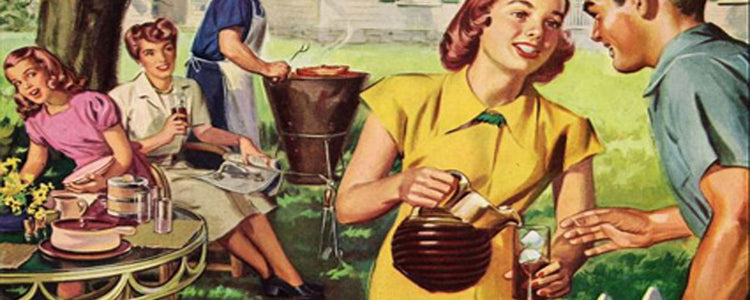
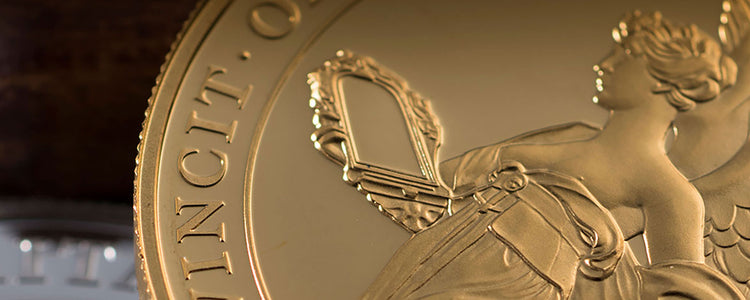
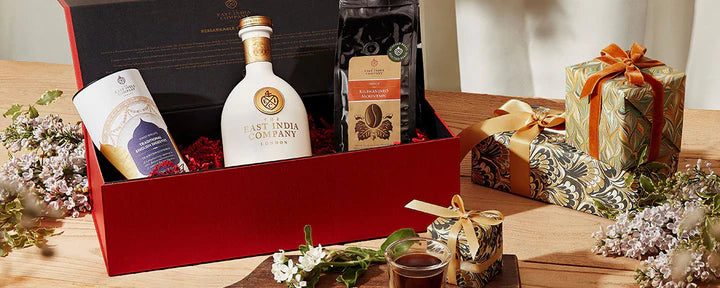
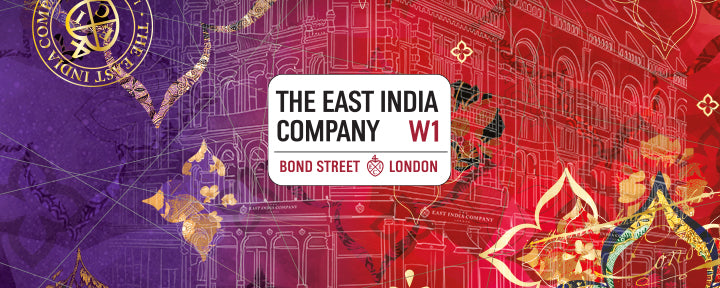
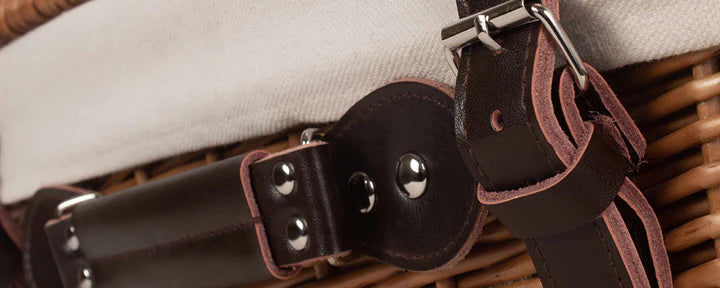
 Ceylon / Sri Lanka
Ceylon / Sri Lanka Assam, India
Assam, India Japan
Japan Taiwan
Taiwan Nepal
Nepal China
China Kenya
Kenya Egypt
Egypt Iran
Iran South Africa
South Africa